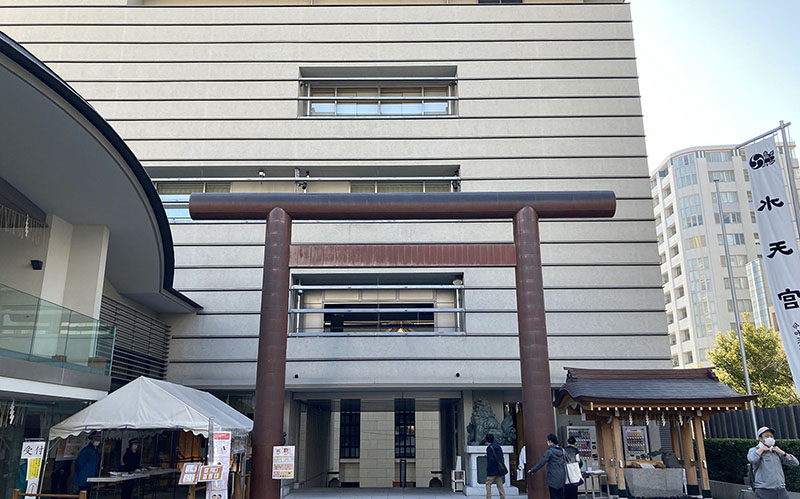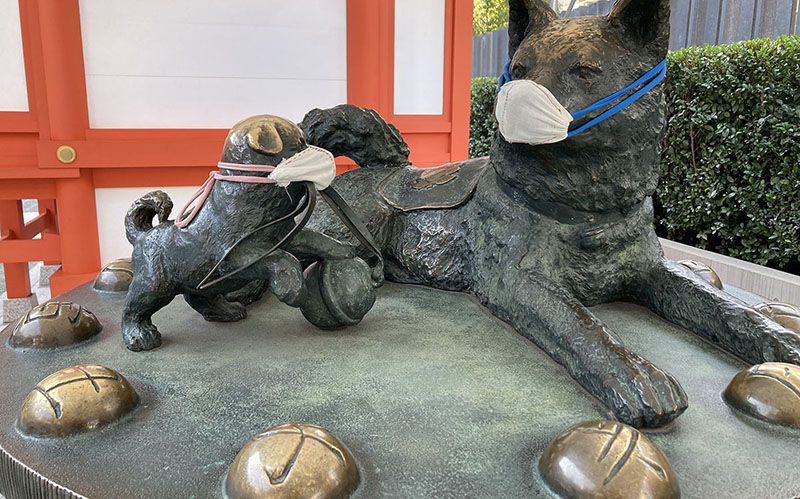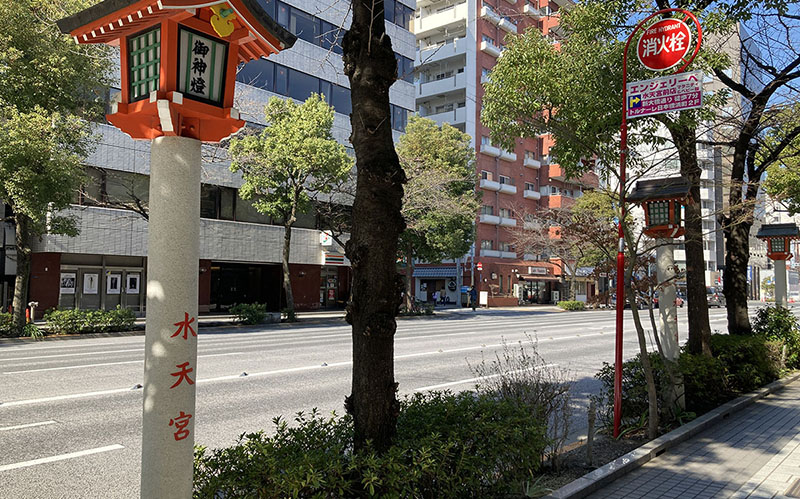When it comes to praying for safe childbirth, the Suitengu is the place for it. It is a shrine surrounded by tall buildings in Nihonbashi Kakigaracho. Many couples who wish for a baby or safe delivery come to visit the shrine from all over the country. On the Day of the Dog and Taian lucky days, it is crowded with worshippers.
How did Suitengu become famous for safe childbirth? I will introduce the history of Suitengu, along with some places you don’t want to miss.

About of Suitengu Shrine
The Headquarter is Located in Kurume City, Fukuoka Prefecture
The headquarters for all Suitengu is the Kurume Suitengu, in Kurume City. There are branch shrines all over Japan. Among them, the Suitengu in Tokyo has long been known for its blessings for safe childbirth.
In 1818, the Arima family, who were the head of the Kurume Domain during the Edo period, moved the divided spirit to their estate in Edo, so they could visit and worship Suitengu during their stay in Edo . This is said to be the beginning of the Suitengu we know today. Since it was moved to its current location in 1872, it has survived many hardships, including the Great Kanto Earthquake.
Ancestor of Many Gods, ‘Ame-no-Minakanushi’
The name Suitengu may imply that it enshrines gods related to water, but actually it enshrines four gods: The Great God Ame-no-Minakanushi, Emperor Antoku, Kenreimon-in Tokuko, and Taira no Tokiko.
Ame-no-Minakanushi is the ancestor of Amaterasu and many other gods in Japanese mythology, and is said to bless pregnancy and safe childbirth.
Safe Delivery with a Bell Cord Belly Band
The reason Suitengu became popular for prayer for safe delivery goes back to the Edo period.At that time, sarashi cotton was used for the bell cord (the string that goes down from the bell that is rung when praying) of the Suitengu. One day, when a pregnant woman was given an old bell cord, she used it as a belly band and had a very safe delivery.
This story spread, and many people began to visit Suitengu to pray for safe delivery.
Today, the safe delivery charm at Suitengu is a “Misuzu Obi,” an unbleached sarashi with Suitengu seal, used to wrap around the belly.




Sights to see of Suitengu Shrine
Main Shrine
Suitengu was newly renovated in 2016 to commemorate the 200th anniversary of the shrine’s establishment in Edo. Now it looks so stylish that at first glance it’s hard to believe it is a shrine. Even the statue of zuishin (attendant deity ) enshrined in the middle of the stairs is eye-catching, almost like an exhibit in a museum.
The shrine building was also rebuilt at the same time. It is white wood Shinto architecture, and while glamourous decorations and sculptures of traditional decorative metal fittings are embellished, the latest technology is used for the earthquake-absorbing structure.
It is a shrine that is in tune with the times, incorporating the old and the new.



Kodakara-Inu
This is a bronze statue of an adorable puppy and a mother dog watching her puppy. Dogs are a symbol of safe childbirth, for dogs have many puppies and their delivery is quick.
Embedded around this statue are stones engraved with letters of the twelve Chinese zodiac signs.
It is said that if you pray while stroking your zodiac sign, you will receive various blessings such as safe delivery, conception, and development.
The stone and the dog’s head glitters gold, likely because many people pat the stone and the dog’s head for blessing.

Komainu
This is the pair of komainu sitting on both sides at the top of the main stairs. The one on the right has its mouth open and protects a ball with its paw, while the one on the left has its mouth closed, and it strikes a memorable pose of protecting a puppy. Each statue represents the “A-Un” breath, or the exhale and inhale, and is meant to ward off evil.

Kappa of Safe Childbirth and Child-Rearing
Right next to the temizuya (water purification pavilion), there is an adorable statue of a mother kappa with baby kappa on her breast, shoulder, and around her leg. You can pay your respects by sprinkling water on the statue.


Hosho Benzaiten
Next to the kappa is a beautiful vermillion Hosho Benzaiten. The ninth lord of the Arima family, Yorinori Arima, competed with Sir Narinaga Maeda of Kaga in noh techniques. During this time he practiced hard and prayed to Benzaiten. Since he won, this Benzaiten is known as an energy spot blessed with good fortune in academics, arts and crafts, and wealth.




Access to Suitengu Shrine
2−4−1 Nihombashi Kakigaracho, Chuo City, Tokyo
TEL : +81-3-3666-7195
Parking around Suitengu Shrine
Suitengu Shrine Official Website
official site:http://www.suitengu.or.jp/
